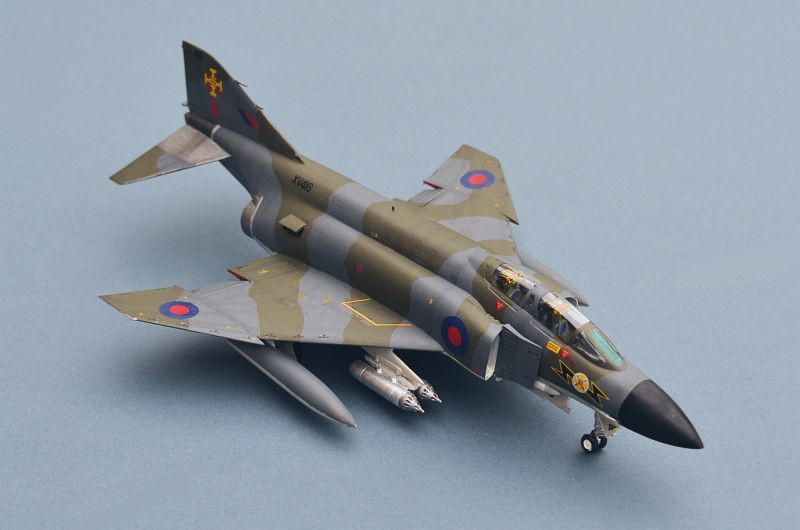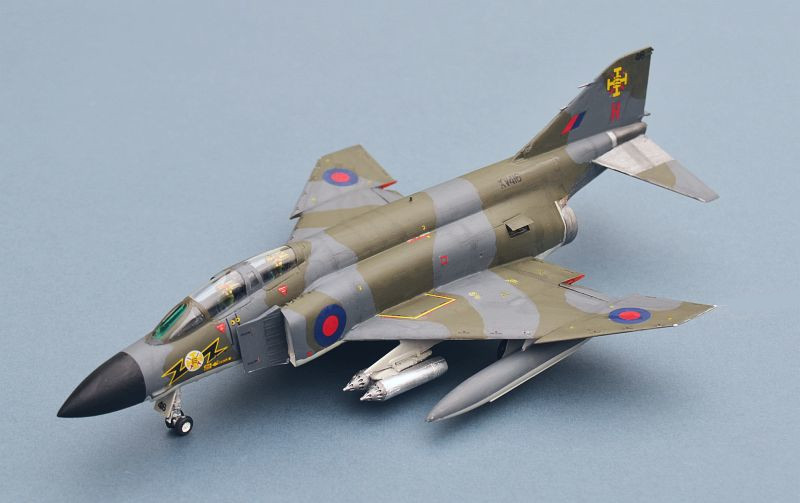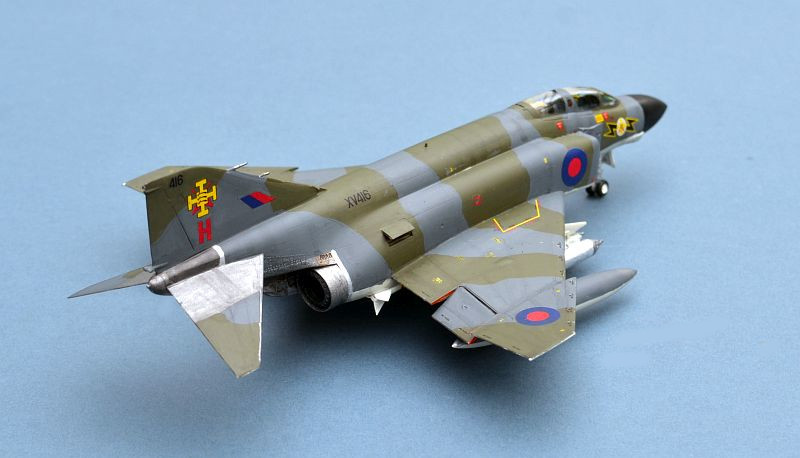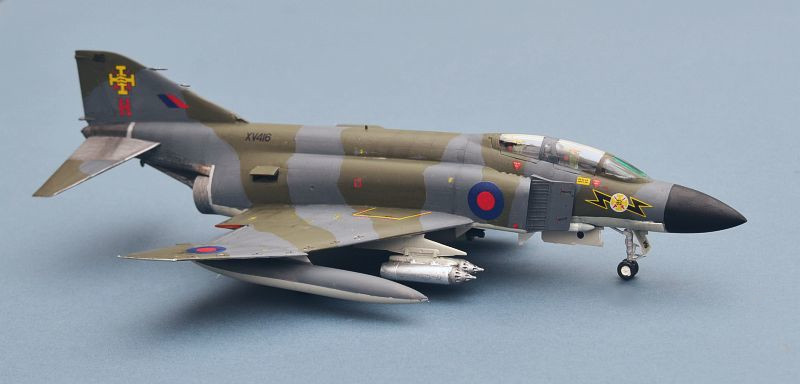McDonnell Douglas
F-4 Phantom II
For many people, myself included, the Phantom represents the pinnacle of Western
Cold War fighter aircraft. First flying in 1958 and entering service with the US
Navy in 1960, it remains in front-line service with a number of air arms across the
world in 2020, some 60 years later.
The Phantom II started life as a speculative private venture, intended as a supersonic
(Mach 2.2) naval carrier-borne all-weather fleet-defence fighter. As well as US
Navy, service as the F4H-1 Phantom it was quickly adopted by the USAF as the F-110
Spectre, but eventually reverted to a common F-4 Phantom designation.
British F-4 Phantoms
The Phantom entered UK service in 1968 with 48 FG.1 aircraft delivered to the Royal
Navy and 118 FGR.2 aircraft for the RAF. Although based on the US Navy F-4J, British
aircraft were noticeably different, with larger Rolls Royce Spey engines requiring
a redesign of the after fuselage. As well as fitting UK avionics, drooping ailerons
and enlarged wing flaps enabled lower landing speeds and the tail-hook was strengthened
to allow greater wire loads. For the FG.1, a 40 inch extending nosewheel allowed
launch from the RN’s shorter catapults.
With only one conventional carrier in service, surplus RN orders were transferred
to the RAF where they replaced the BAC Lightning on air defence duties. When HMS
ARK ROYAL was finally paid off in 1978, the remaining RN aircraft followed suit.
In 1984 the RAF also added 15 refurbished ex-US Navy F-4J aircraft to its inventory,
backfilling the gap caused by the permanent deployment of an FGR.2 flight to the
Falkland Islands and to mitigate delays with the entry into service of the Tornado.
Phantom FG.1, 767 Sqn Fleet Air Arm
RNAS Yeovilton, 1971.
Fujimi - build “out the box”. The Fujimi kit remains the best option for a British
Phantom model. Link to Rebuild
767 Sqn was the RN’s 2nd line Phantom Training and HQ Squadron, based ashore at RNAS
Yeovilton. Formed in January 1969, in its original form it also trained RAF FG.1
pilots, but was disbanded and replaced by a RAF Leuchars-based joint RN-RAF Phantom
Training Flight in 1972.
Return to Website Index: 

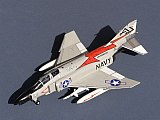
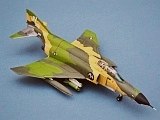
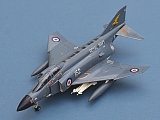
Click on the thumbnail tile to see more details of each model:
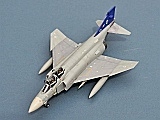
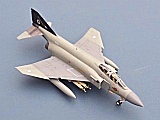
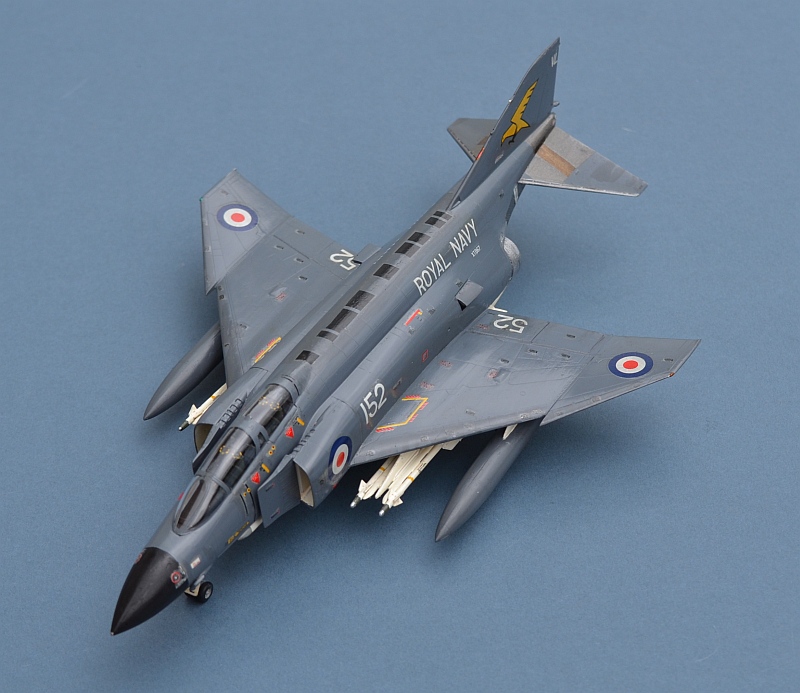
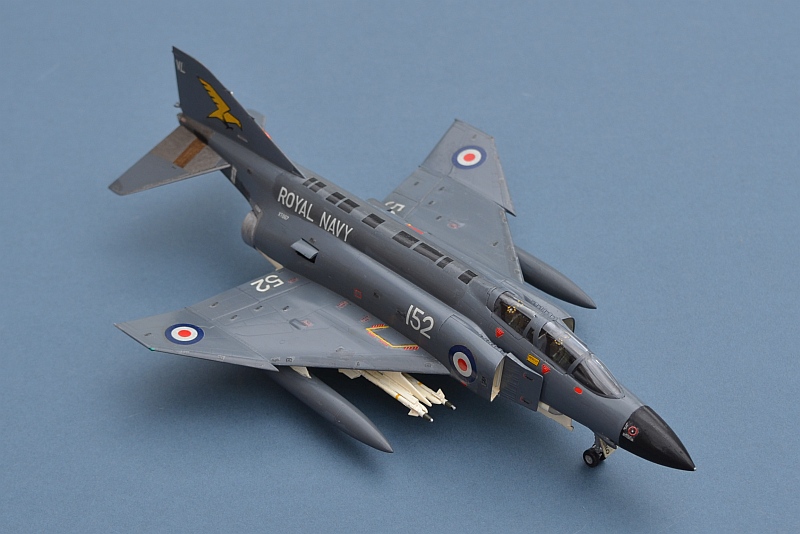
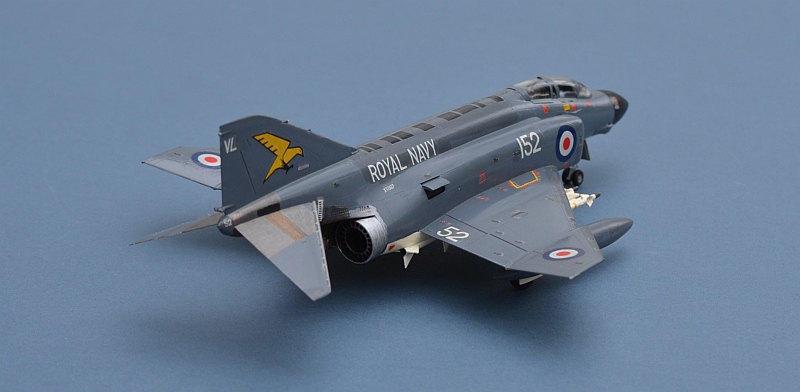
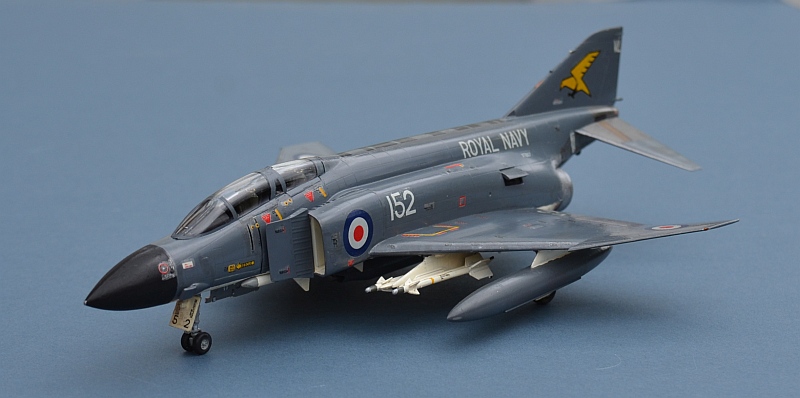
Phantom FGR.2, 228 OCU (64R Sqn) RAF
RAF Leuchars, 1987
Fujimi - build “out the box”. The Fujimi kit remains the best option for a British
Phantom model.
The main difference between this kit and the FG.1 above is the lack of slotted tailplanes
that were fitted to enable lower landing speeds on the RN’s carriers and the lack
of an extending nose wheel, also fitted to assist in RN carrier operations. Link
to build
228 OCU was the RAF’s 2nd line conversion unit for UK-based Phantoms. Operating initially
out of RAF Conningsby, in 1987 it moved north with its FGR.2 aircraft to RAF Leuchars,
where it was accommodated alongside the FG.1s of 43 Sqn and 111Sqn.
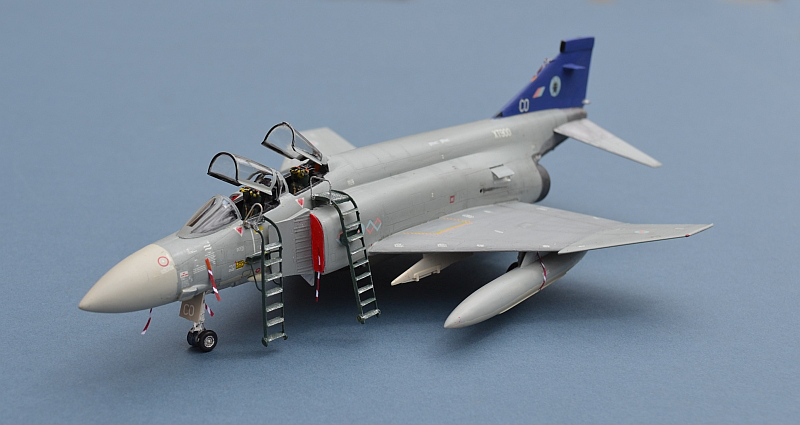
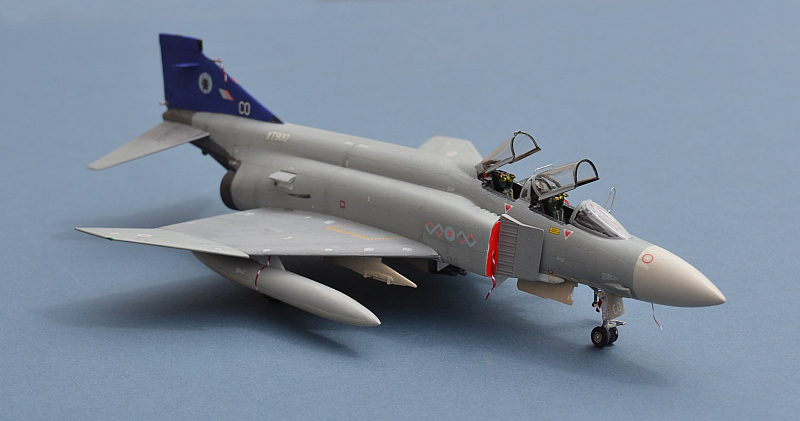
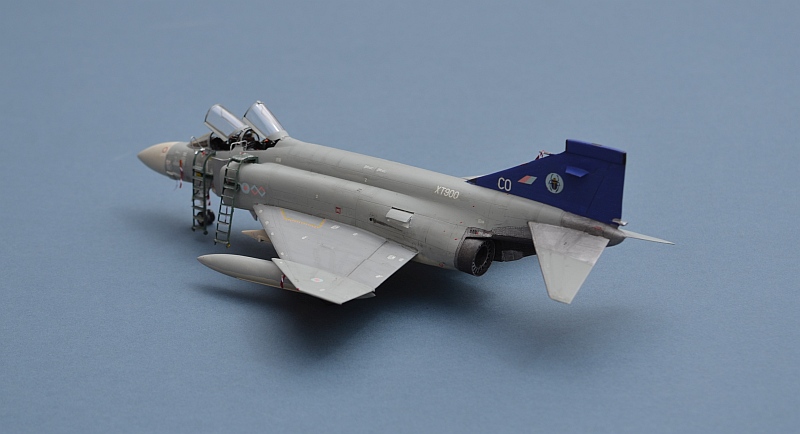
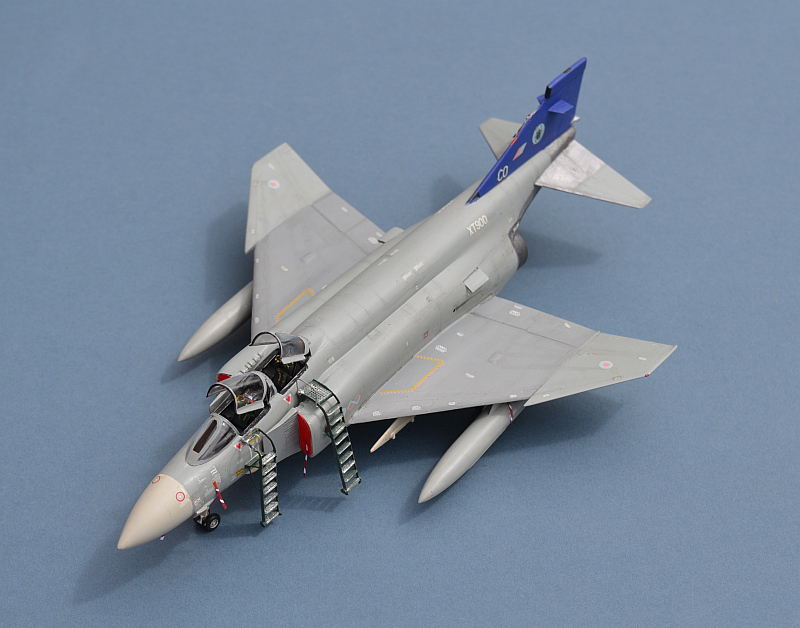
Phantom F-4J (UK), 74 “Tiger” Sqn RAF
RAF Wattisham, 1988
Italeri F-4S with wing modifications (removal of outer wing combat slats) and Kits-World
decals. Link to build
74 Sqn was formed in 1984 as a backfill for 23 Sqn’s deployment to RAF Stanley to
defend the Falklands . Ex USN F-4js were removed from storage at the vast Davis
Monthan AMARC facility in Arizona desert and partially modified to F-4S standards.
Retaining their American J79 engines (and thus slimmer aft fuselage), the aircraft
were faster at altitude and able to manoeuvre with greater loads. To minimise costs,
the aircraft saw little modification to UK standards, so aircrew had to use some
US equipment including helmets and oxygen masks. They were eventually replaced by
surplus FGR.2s that became available in 1991 as RAF Germany drew down its Phantom
force.
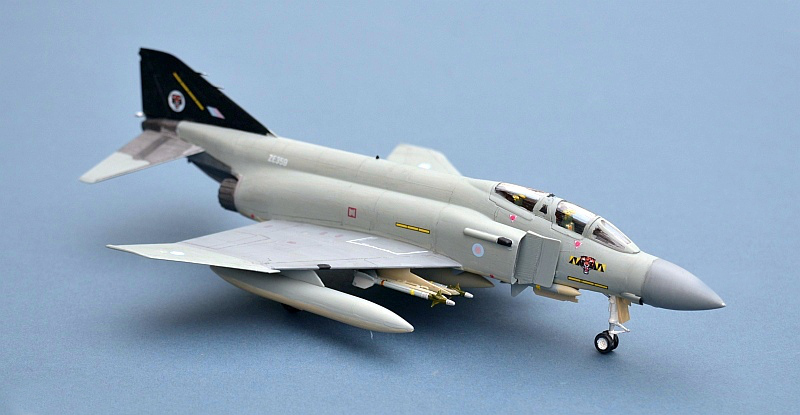
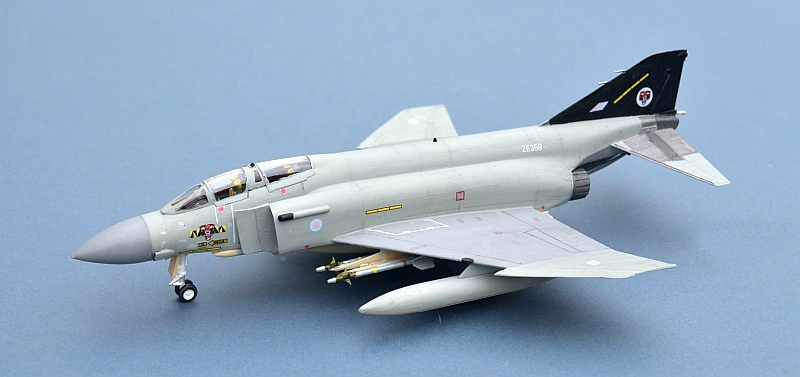
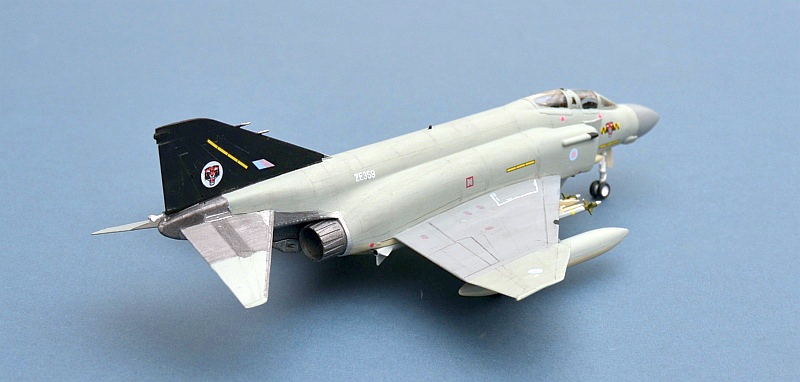
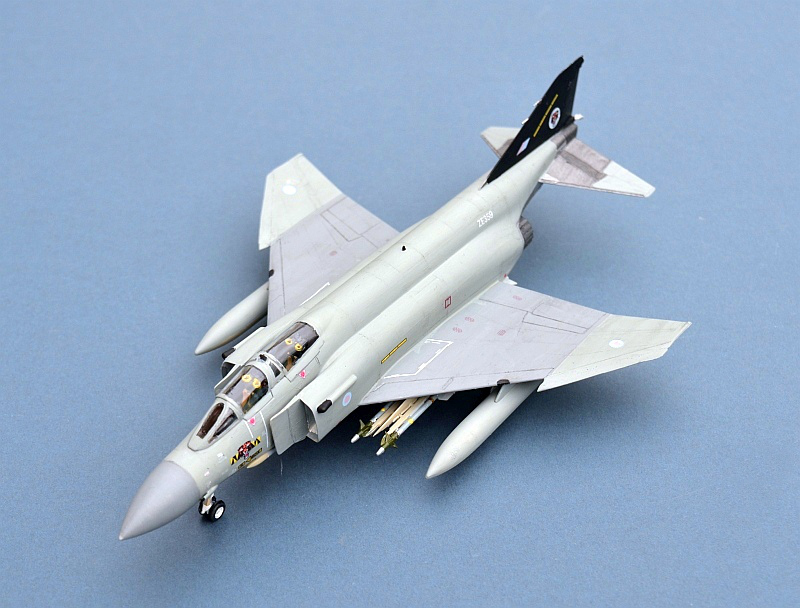
Phantom F4H-1 (F-4B), VF-74 “Be-devillers” US Navy
USS FORRESTAL, Gulf of Tonkin, east of Vietnam, 1967
This early USN aircraft is marked for an aircraft of VF-74, present onboard the USS
Forrestal at the time of its horrific 1967 flight deck fire during operations of
the Vietnamese coast. Zuni rockets from an aircraft parked on deck fired accidentally,
setting fire to a large number of armed aircraft on deck and igniting sensitive WW”-era
munitions that were being used for bombing raids contrary to USN Safety regulations..
Many fight deck crew were killed and injured whilst fighting the massive fire and
explosions that followed.
During the Vietnam war, US Navy F-4s downed 40 enemy aircraft for a loss of 7 Phantoms.
USMC pilots also claimed another 4 kills for one loss.
Phantom F-4E, 469 TFS, 388 TFW, USAF
Royal Thai Air Base Korat, Thailand 1969
The F-4E variant was developed from the earlier USAF F-4C and D and drew heavily
on Vietnam combat experience and incorporating an internal M61 Vulcan cannon in the
nose for dogfighting.
The F-4E was first deployed to the Vietnam operational theatre in 1968, where it
began to replace the F-105 in the bombing role and as the primary Air Superiority
fighter.
The Commander of the 388th TFW, 13th Air Force was Colonel Paul Douglas, a WWII P-47
ace with 8 victories flying the "Arkansas Traveler". In Vietnam, F-4E 67-0288 "Arkansas
Traveler II" became his personal aircraft and was adorned with the same 8 victory
markings and nose art of a hillbilly riding a bomb that were on his P-47.
During the Vietnam War USAF F-4s were credited with 107 victories for 33 F-4 air-to
air losses, although many more aircraft were destroyed by anti aircraft fire or on
the ground.
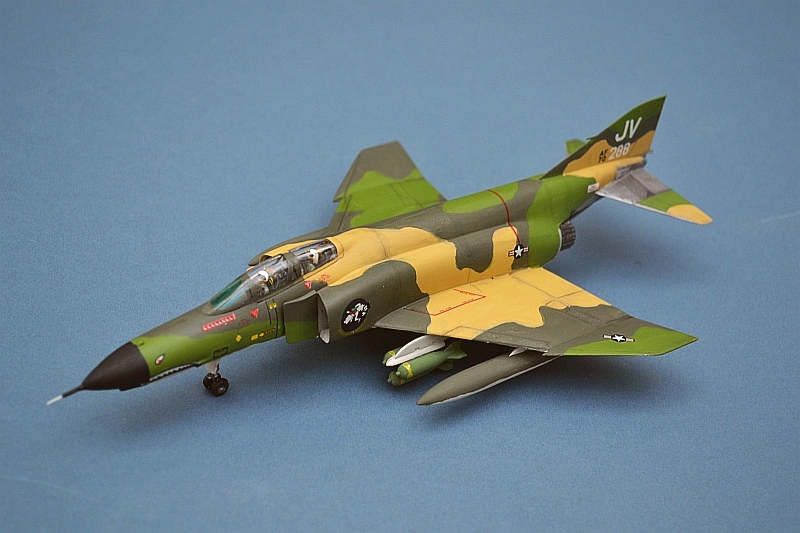
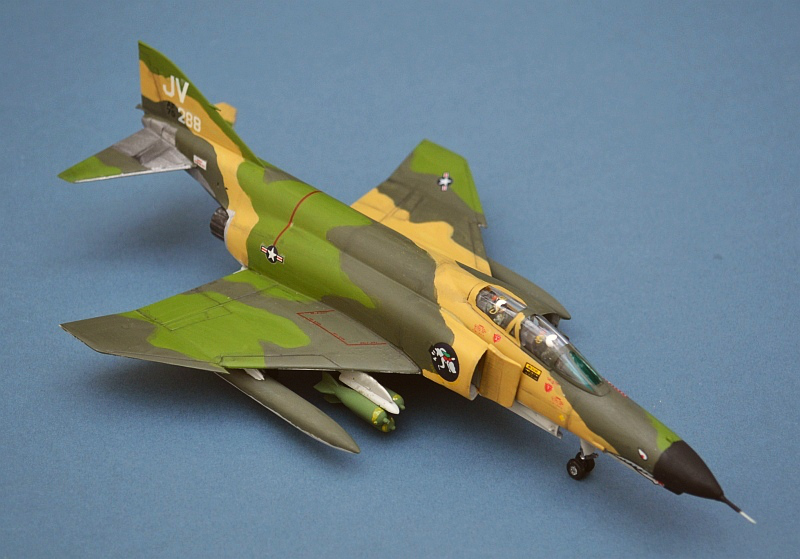
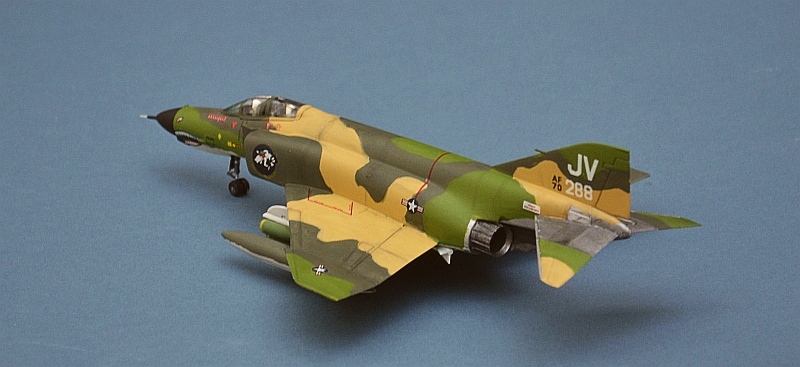
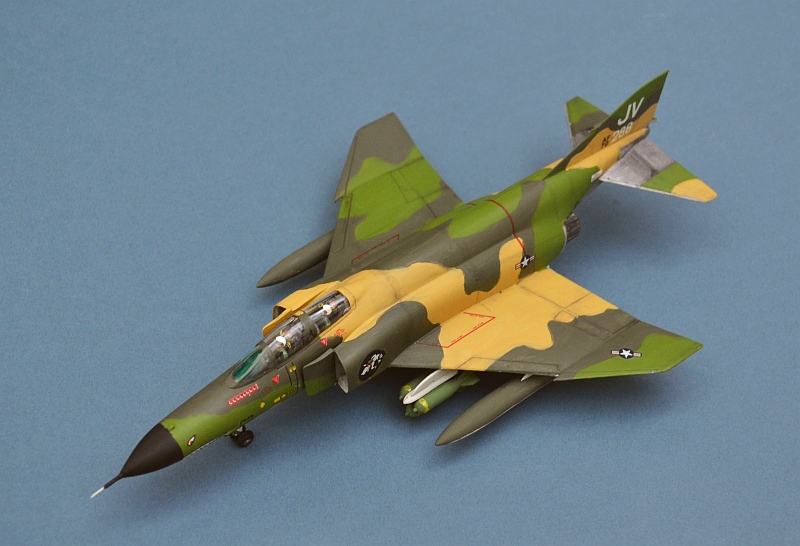
Phantom FG.1, 892 Sqn Fleet Air Arm
HMS ARK ROYAL, 1977.
Fujimi - build “out the box”. The Fujimi kit remains the best option for a British
Phantom model. Link to Build Page
Due to the UK’s dire economic situation at the end of the 1970s, 892 Sqn was the
RN’s sole front-line Phantom squadron, based onboard the carrier HMS ARK ROYAL (after
HMS EAGLE was paid-off early and the new CVA-01 HMS QUEEN ELIZABETH was cancelled).
Even with this reduced force, alongside its Buccaneer strike aircraft and Gannet
AEW aircraft, the Fleet Air Arm was more powerful than most air forces around the
world, but RAF planners convinced a naive Labour Government that land-based aircraft
could protect British interests around the world just as easily (allegedly by changing
a map). In retrospect, it is easy to speculate that had ARK ROYAL and its air group
remained in service in 1982, the Falklands war, undertaken far beyond the reaches
of the RAF, would not have happened.
When not at sea, 892 Sqn was initially based at RNAS Yeovilton in Somerset, but later
moved to RAF Leuchars in Fife which became the centre of UK Phantom fighter activity.
This aircraft bears special nose markings applied for HM The Queen’s Silver Jubilee
in 1977. Sadly, bad visibility limited the planned flypast at the Silver Jubilee
Feet Review of the Royal Navy at Spithead on the Solent.
The RN’s Phantoms were withdrawn and transferred to the RAF when HMS ARK ROYAL paid
off in 1979.
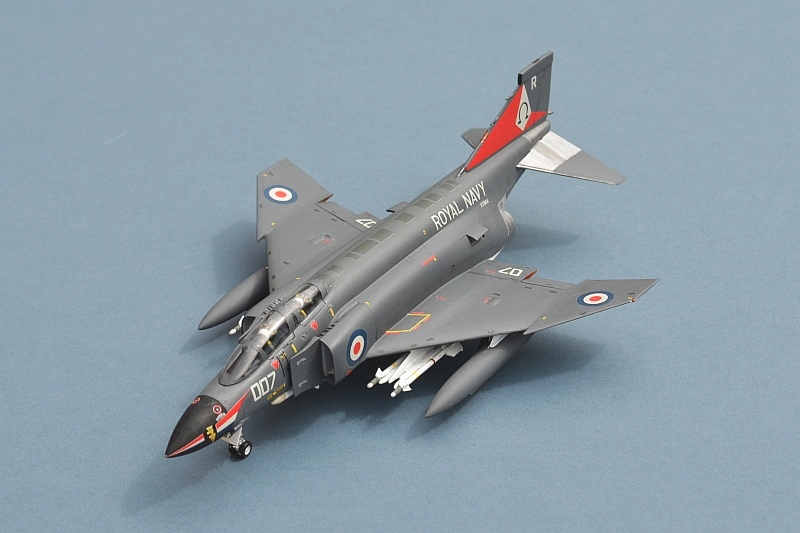
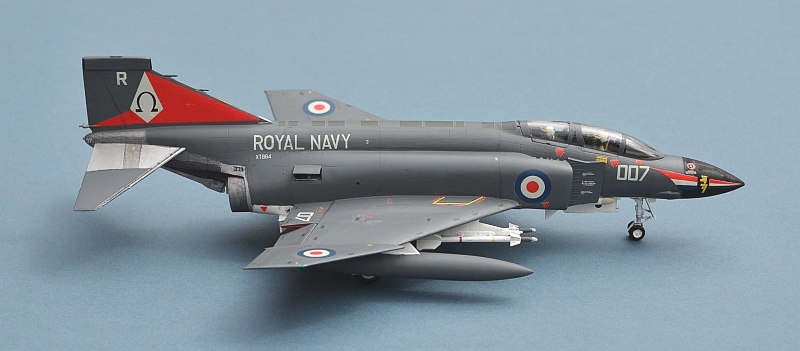
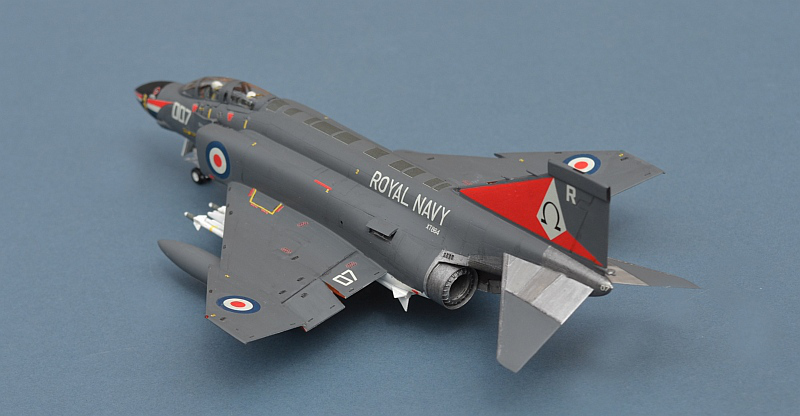
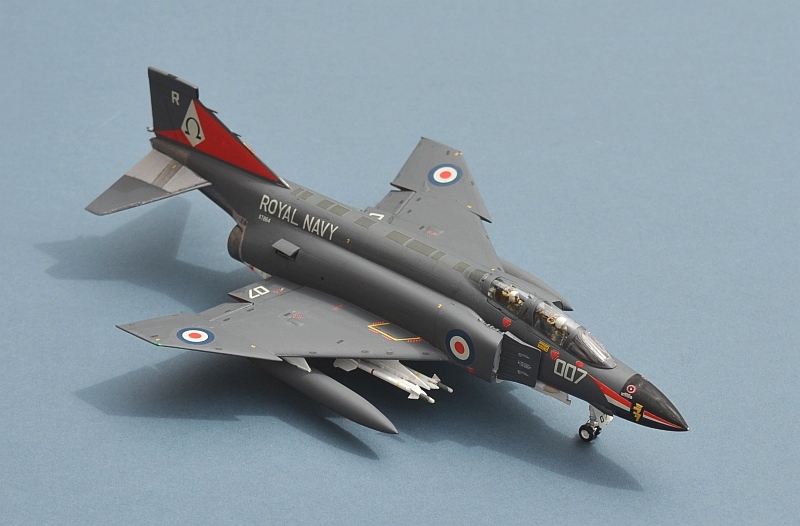
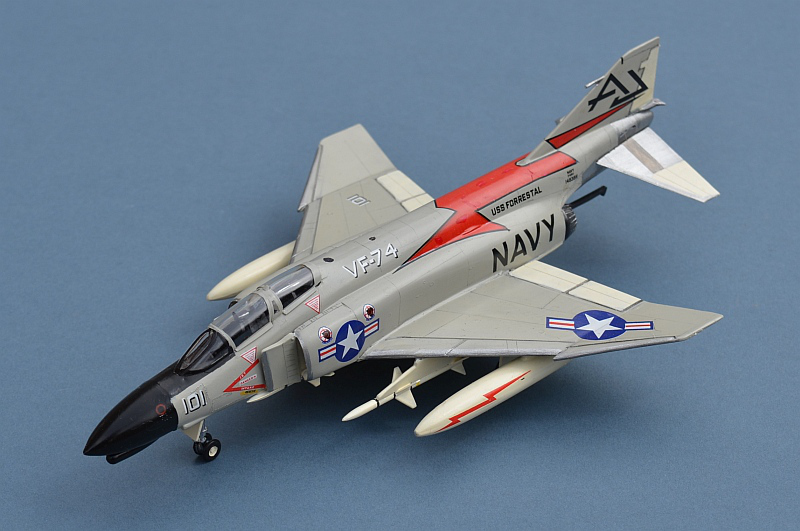
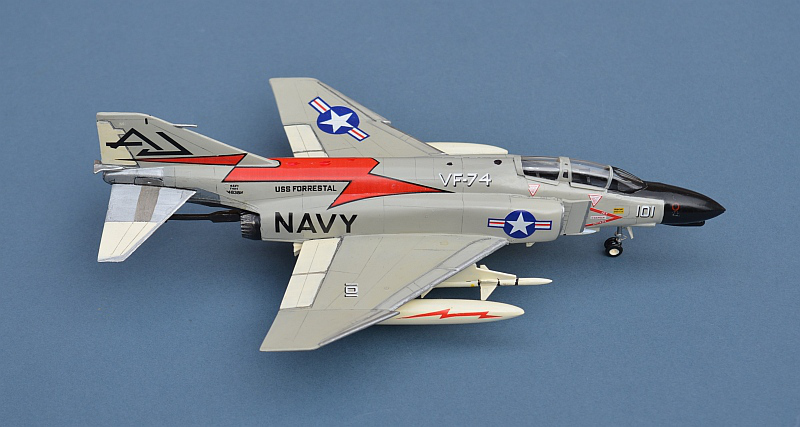
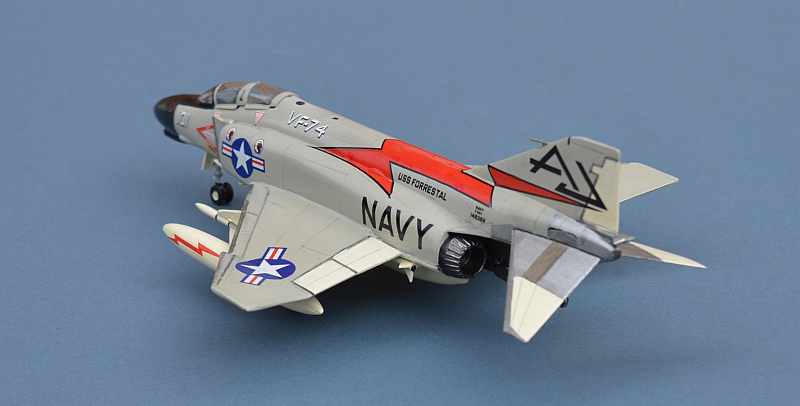
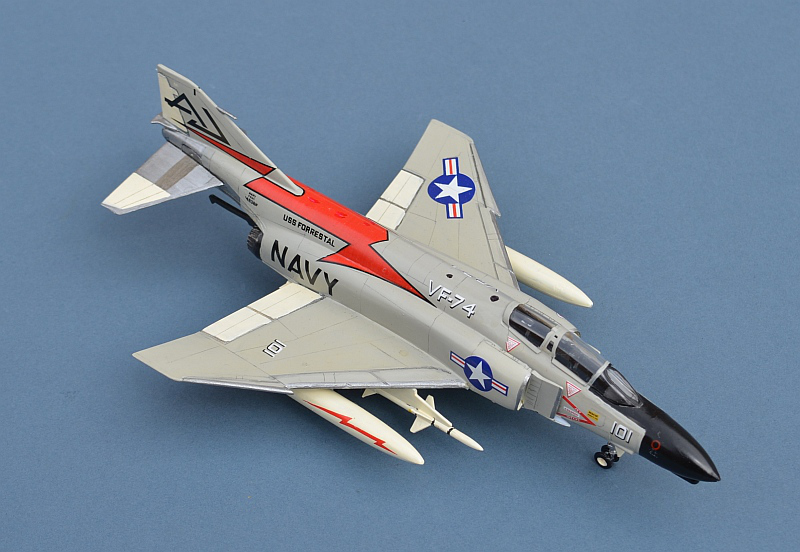
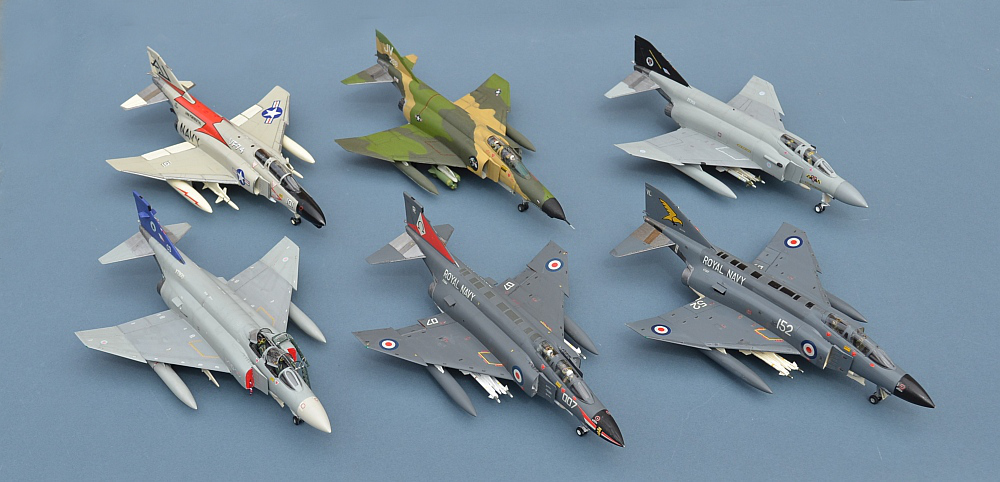
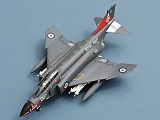
US F-4 Phantoms
Perhaps best known for its role in Vietnam, the Phantom began life as a US Navy all-weather
Fleet Defence Interceptor designated F4H-1. Powered by 2 General Electric J79 engines,
it was capable of Mach 2,.2 at height. The first fully operational Naval version
was the F-4B, with deliveries commencing in 1961.
The USAF also received Phantoms as part of a US Government initiative to rationalise
the number of different aircraft in use by the US Forces, initially as the F-110
Spectre . To its credit, the F-4 succeeded in this dual-identity where many other
aircraft had failed, quickly adapting to the USAF Strike role but retaining its air
to air superiority. The USAF F-4C version, based on the Navy’s F-4B, first flew
in 1963. Three years later, the USN received its first improved F-4J versions with
more powerful J79 engines and significantly upgraded radar. This formed the basis
of all future USN variants, including the later F-4N (reworked F-4Bs and the final
F-4S (updated to include some F-14 Tomcat capabilities and reduce engine smoke).
The USAF received similar updates to reflect experience in Vietnam, first with the
F-4D, which adopted the USAF’s unsuccessful AIM-4 Falcon air to air missile (which
quickly reverted back to the Navy’s AIM-7 Sidewinder), then the definitive F-4E with
an internal cannon for dogfighting (and which underpinned most land-based export
variants). The RF-4 B, C and E specialised in reconnaissance whilst there were also
specialised SEAD “Wild Weasel” variants.
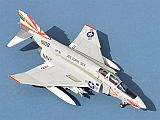
Phantom F4N, VF-111 “Sundowners” US Navy
USS CORAL SEA, Vietnam, 1975
From the 1970s onward, the US Navy began to upgrade its F-4Bs and F-4Js into the
F-4N and F-4S respectively. A complete remanufacturing programme saw the aircraft
emerge almost as new” with modernised weapons and sensor systems, plus smoke abatement
measures for the infamously smoky J-79 engines.. VF-111 swapped its F-4Bs for F-4Ns
for a very short period in 1975 before moving to the F-14 .
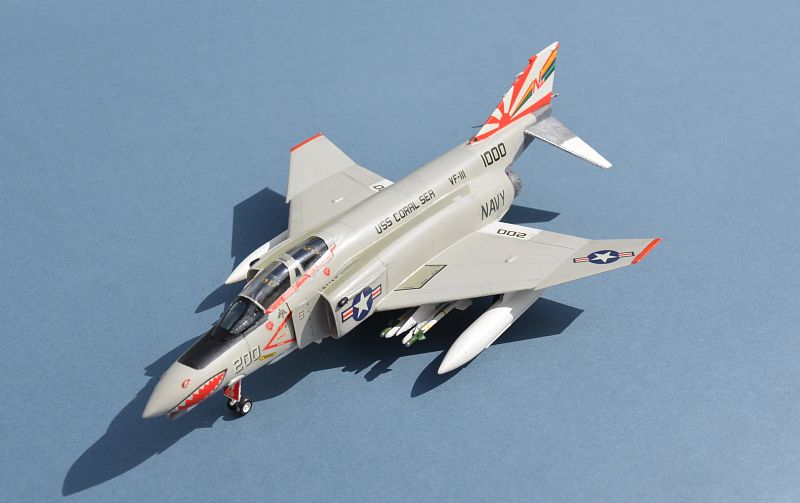
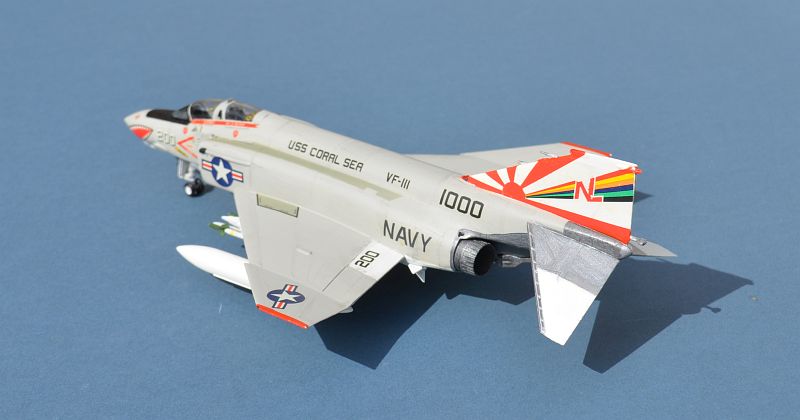
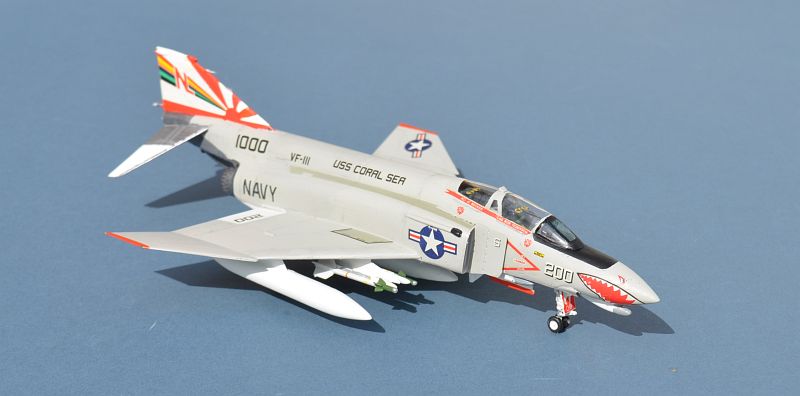
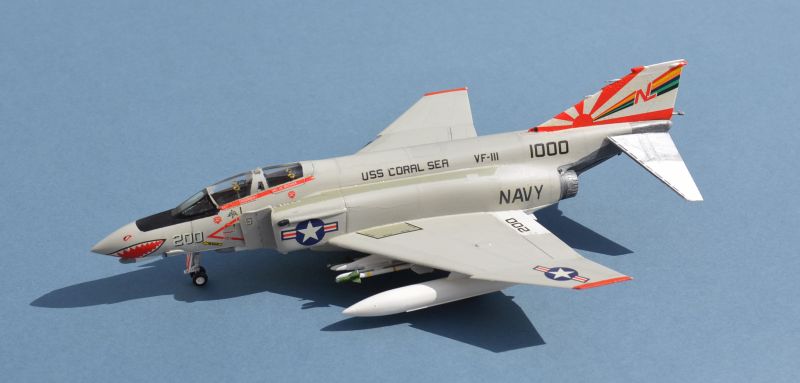
Phantom FGR.2, 111 Sqn RAF
RAF Leuchars, 1975
Another Fujimi build , this time with Xtradecal (and a few Modeldecal) markings,
carrying a ground attack weapon load.
The earlier FGR.2s lacked the promiinent fin mounted ECM antennae. Later in their
careers, they could also sometimes be seen with FG.1 style slottted tailplanes. Link
to build
111 Sqn fomred up on the F-4M at RAF Coningsby in 1974. In 1975 they moved to RAF
Leuchars to join 43 Sqn in the Air Defence Quick Reaction Alert role. alongside the
FG.1s of 43 Sqn and occasionally of 892 Naval Air Squadron. 111 did not retain
their FGR.2s for long, swapping them for the lighter and more air defence optimised
FG.1s in 1979 when HMS ARK ROYAL paid off and the ex-RN Phantoms became available
to the RAF.
